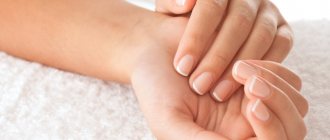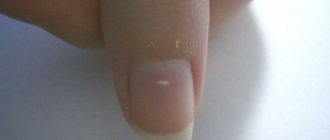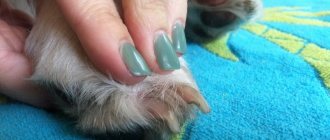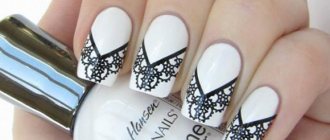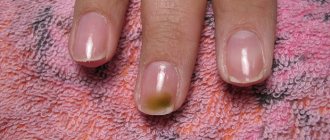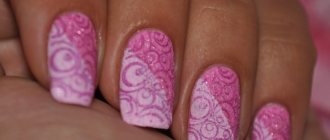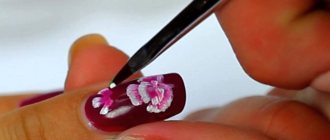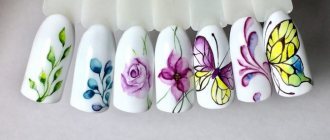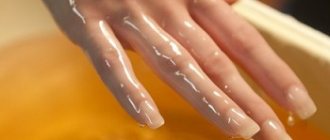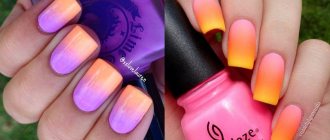The magic of charm » Health
If you look at our nails, you can see light crescents at their base. These are holes or lunulae. But have you noticed that they may not be on every nail, or they are clearly visible on one nail plate, but not on the other? This issue is worthy of consideration, because by the presence or condition of a hole on one of the nails one can judge the development of a certain disease in a person.
Official medicine supports the theory of diagnosing diseases by the shape, color, and type of surface of the nail. You can easily carry it out even at home on your own, and an experienced specialist can easily confirm or refute your suspected diagnosis. The condition of your nails will reflect problems with the large and small intestines, blood circulation, cardiovascular and endocrine systems.
What diseases can holes in the nails indicate?
Tibetan healers also believed that you can tell from a person’s hands whether he is healthy or not. They paid special attention to lunulae, believing that their shape and specific features could indicate internal disorders of the body.
note
The shape of the nail plate and the size of the lunula may depend on many factors, genetic predisposition and individual characteristics of the body.
The following external signs may indicate that it is time to think about a preventive visit to the doctor:
- uneven color at the base of the nail, stains;
- whitish spots on the nail plate;
- bumps, grooves, uneven shape of the nail bed;
- complete disappearance of lunulae (provided that they were there initially).
The shape and color of nails can be directly influenced by lifestyle. In girls who often exhaust themselves with diets, the nail plates can become thinner, brittle, and brittle due to a lack of nutrients. Nails can curl and break if you drink too much alcohol. Chronic diseases also make themselves felt. For example, in people suffering from diabetes, the holes may darken and the nails themselves may become covered with elongated grooves.
Helpful information
The disappearance of holes in the nails or their paleness can be a natural age-related change in older people. The holes of the little finger disappear first, then the ring, middle and index fingers. The holes at the base of the thumbs turn pale last, as they take up the most space.
Even if you feel well and have no specific symptoms of the disease, you should pay attention to the holes. They, as an indicator of health, can indicate the presence of pathological processes in the body.
- Large, identical on all nails - a sign of good health and good immunity.
- Small, barely visible ones may indicate circulatory problems.
- The nail has become convex at the base - indicates serious problems with the lungs or the risk of developing tuberculosis.
- Plates concave inward indicate a lack of iron sources in the diet.
- Flattened, flat nails are most often found in those whose bodies are affected by helminthic infestation.
- If the nail plate is so stratified that the lunula is not visible , this indicates a strong slagging in the body.
About nail care after extensions
Not a single manicure will last forever, including arched extensions and plates coated with gel polish. Especially after removal, girls notice that their nails do not look well-groomed and require additional protection, since the plate has become thinner and sensitivity has increased.
To do this, experts recommend taking additional courses of restorative procedures or using sealing with wax or gel for medicinal purposes.
Organs and systems of the body for which each of the holes is responsible
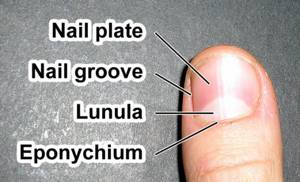
The Japanese believed that the body's hidden reserves could be stimulated by massaging the hands, because each finger corresponds to a specific organ. In Tibet, they believed that it was possible to make a conditional diagnosis just by looking at the holes in the nails.
- The lunula is the largest and most noticeable on the thumb Responsible for the functioning of the brain and lungs. May be greatly reduced in smokers or in people with serious mental disorders.
- On the index finger – responsible for the gastrointestinal tract and pelvic organs. Disappears for problems with the stomach, pancreas, liver and inflammatory processes occurring in the pelvic organs.
- The middle finger reflects the state of the cardiovascular system. The disappearance of the hole may indicate the development of vegetative-vascular dystonia, blood pressure disorders or arrhythmia.
- On the ring finger, the hole is not the most noticeable, but still its complete disappearance may indicate the need to visit an endocrinologist to make sure the thyroid gland is healthy.
- The little finger socket may normally be absent or completely invisible. However, its sudden and complete disappearance may indicate severe slagging of the small intestine. This sign signals the need to detoxify the body.
Master class by Olga Baranova, technologist-teacher at Formula Profi
- We prepare the nail plate for modeling as standard. We apply the preparatory liquids “Profi Prep” and “Profi Bond”.
- Rub a small ball of pink transparent acrylic from the VIP series into the nail plate.
- Install the plastic mold.
- We form a thin substrate from pink transparent acrylic of the VIP series in combination with the Express monomer.
- We lay out the extension using camouflage acrylic.
- We finish modeling the extension zone with transparent pink VIP acrylic. Butt to the extension zone, we lay out the smile zone with white acrylic powder, reducing the color to nothing towards the tip of the nail. We press the nail.
- Spread mica onto a thin layer of “Formula Profi” transparent powder.
- We complete the nail architecture with Formula Profi transparent powder.
- We file the nail to shape and polish it.
- Using a simple pencil we outline the contours of the drawing. Using “Color Formula” gel polishes using watercolor technique, we create an underpainting of the flower and leaves. We polymerize in a lamp for 20 seconds.
- We create a contour drawing and highlight the center of the flower using gel polishes.
- Cover with Formula Profi top gel without a sticky layer. We cure for 2 minutes in a UV lamp.
- Apply oil to the cuticle.
What does the color of the lunula say?
Even from a medical point of view, a change in the color of the lunula is a rather valuable diagnostic sign:
- White color is normal. Ideally, lunulae should be just a few shades lighter than your skin tone. If the nail becomes covered with whitish spots, this indicates disturbances in the functioning of the heart muscle.
- Yellow spots indicate circulatory disorders in the brain. You should sound the alarm if yellowing of the nails is accompanied by a severe headache, dizziness or floaters in the eyes.
- Gray is an indicator of severe physical exhaustion or problems with nutrient absorption.
- A blue tint may indicate a copper metabolism disorder.
- Blue or purple color of the lunula indicates a lack of oxygen in the blood. This problem occurs in people suffering from night snoring and breathing rhythm disturbances.
- red with heart failure, liver cirrhosis and psoriasis. It is important to analyze and remember what symptoms have bothered you recently.
- Black bases of the nail can appear after a severe bruise, pinching, burn, injury, and even gas poisoning.
Diagnostics
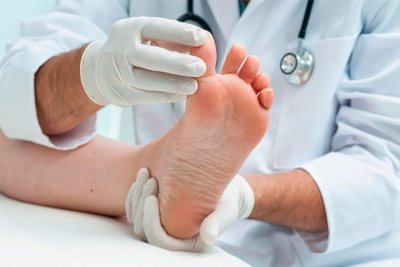
It is detected by physical examination of the affected nail plates. To select the correct treatment regimen, additional research is required to identify the cause of the disease and assess the general condition of the body. Laboratory diagnostics includes:
- Scraping from an area affected by fungi and bacteria. This analysis allows you to determine the type of pathogen and determine its sensitivity to certain drugs.
- A general blood test is performed to assess the condition of the entire body.
It is also recommended to consult a gastroenterologist, endocrinologist and other specialized specialists.
Size of holes on different fingers and diseases
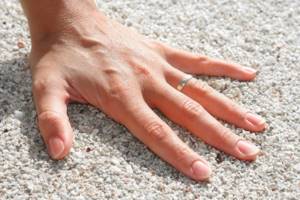
We figured out the color and location of the lunula. Now let's try to understand what features the size of the holes on the fingers can tell about.
- The holes occupy more than a third of the nail plate - this sign most often indicates low blood pressure, arrhythmia and other problems in the functioning of the cardiovascular system.
Large lunulae are most often found in people whose professional activities involve severe physical activity or increased levels of stress.
- The holes barely reach the cuticles - a sign of poor metabolism, deficiency of iron or vitamin B12 in the body. Such holes are often found in vegetarians, vegans and people who have excluded red meat from their diet for dietary purposes.
- There are no holes at all - often they are not visible in young children, due to the fact that the nail plate is too small, or in people with a trapezoidal nail shape.
- A longitudinal stripe in front of the hole may indicate a sharp increase or decrease in blood sugar levels. This happens on diets and when the diet is incorrectly prepared.
- They are located chaotically - their size and location on the left and right hands do not match. A rather rare phenomenon, which is often transmitted through the paternal line, as well as the shape of the nail and fingers.
note
The sudden disappearance of lunula is interpreted in medicine as a violation of blood circulation and heart rhythm. Be sure to visit a therapist and cardiologist if you suspect you have a similar disease.
When you can’t do arch extensions with gel
It is not recommended to perform acrylic modeling immediately after a trimmed manicure. Nail art specialists advise cleaning the side ridges and root parts of keratinized cells in advance, at least 3 days before the procedure.
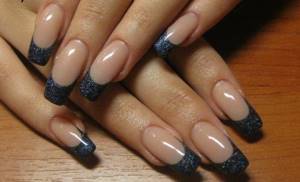
When filing extended nails with a hard file, you can accidentally touch the delicate skin around the nail and damage the cells. Therefore, masters do not recommend doing extensions immediately after a trimmed manicure.
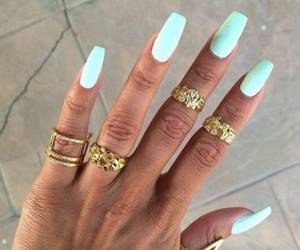
Kinds
Depending on the cause, there are several types of disease.
The most common onycholysis is:
- Traumatic. Nails begin to peel off after blows, wounds, burns, splinters, exposure to heat, cold, prolonged exposure to water, or wearing tight shoes. This also includes pathological changes caused by the action of acids, alkalis, solvents, and household chemicals;
- Fungal. It occurs due to the entry and reproduction of fungal infection pathogens in the subungual space. Formed as a secondary complication of onychomycosis;
- Allergic. Onycholysis develops as an allergic reaction due to taking medications with photosensitizing properties, ultraviolet irradiation (photo onycholysis), and contact of the nail plate with harmful chemicals.
Depending on the size of the affected area, onycholysis can be partial, when only a small area of the nail peels off in the form of a strip or semicircle, and complete, when it comes off entirely. Separation of the nail plate can occur from the distal (free) edge or from the lateral ridges (lateral onycholysis).
